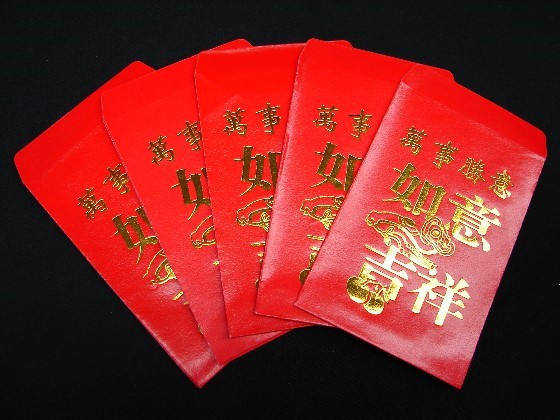Intriguing New Year’s Traditions

Fireworks, champagne, delicious foods, confetti, noise, happiness, and laughter all accompany the welcoming of the New Year. The New Year is a time for celebration that can include many traditions with family and friends. New Year traditions among the Air Academy High School community and around the world are very intriguing and unique. Though traditions and celebrations vary everywhere, overall they all hold similar meanings.
At Air Academy, many students and teachers enjoy spending time with their family and friends. For New Year’s Eve, Maddie May said, “I went to dinner with my family and then I went to a party at my friend’s house. At 12, we drank sparkling apple cider and used confetti poppers. Then, on New Year’s Day, I went skiing on fresh powder, so it was really fun. As well, I relaxed with my family, watched movies, and ate smores.” Another student, Michala Barber, states, “On New Year’s Eve, we [my family and friends] waited up until midnight to watch the ball drop in New York on TV. Then we had a toast with sparkling apple cider and we watched the fireworks on the top of Pikes Peak, which we like to do every year. On the following day, I just hung out with family and close friends to start what will hopefully be a good year.” Skylar Daye, a sophmore, said, “On New Year’s Eve I went to a New Year’s Eve bash at my church. It was a fun event with many teens. We played games, talked, ate a bunch of food, and just chilled. New Year’s Day, I slept in, relaxed, ate food, and hung out with my friend.” Lastly, Chloe Reindl states, “I went to New Orleans for New Year’s Eve with my boyfriend and his family. We went to the French Quarter and it was really fun overall. New Year’s Day, I slept in and ate a huge brunch.” Overall, students enjoy going to different places, or staying at home, always celebrating with family and/or friends.
In different parts of the world many traditions create good luck and prosperity for the year ahead. In China, the Chinese New Year is celebrated on the first day of the Chinese calendar. The calendar is lunisolar, meaning it’s based on the cycle of the moon and the time of the solar year, which causes the starting date to fall on a different day each year, occuring in late January or early February. This year celebrations start January 31st and last up to 15 days. The biggest celebration is on New Year’s Eve, like it is in most places around the world, where firework displays are put on throughout multiple cities. The source of Chinese New Year began through Chinese myths and traditions. It started as a festival to honor deities and ancestors. In modern times, Chinese families often have an annual reunion dinner and they also may clean the whole house to “sweep away ill-fortune and bring good-luck.” Decorations are red paper-cuts and couplets to represent “good fortune” and multiple other things. Dragons are incorporated into celebrations because they symbolize prosperity, good luck, and good fortune. Finally, money is given as gifts in red envelopes- also for good luck.
In Europe, there are also unique traditions. For instance, in Spain, at 12 o’clock, 12 grapes, one for each stroke of midnight, are eaten to bring good luck for the following year. Las doce uvas de la suerte, or “the twelve grapes of luck,” is a tradition from Spain that dates back to 1895. It has been adopted in many other countries that are culturally related to Spain. Another tradition is to wear red undergarments for good luck and prosperity, which must be bought by someone else. It is customary for families to sing and dance loudly to welcome the New Year with happiness. On New Year’s Day, many Spaniards eat chocolates or biscuits in the morning to signify the wonderful celebration they have had. Next, in Germany, New Year’s Day is called Nuejahr, and New Year’s Eve is called Sylvester, named after Saint Sylvester. Extravagant parties are thrown here with much eating, drinking, singing, and dancing to celebrate the New Year. In France, New Year’s Eve is also called Saint Sylvestre. On this day, a traditional ceremony and feast is held with special foods and drinks. This dinner is supposed to bring good fortune to all who attend it. In the South Western part of France, a parade is held in which many people participate by singing and dancing. Overall, the New Year is celebrated with family and friends, and with much excitement and enthusiasm.
Wherever you celebrated New Year ‘s Eve this year, I hope you had a fantastic time with others and welcomed the New Year with hope and happiness. In future years, you may even be able to try out some of these traditions to bring good luck for the year ahead!
Websites
“Chinese New Year.” Wikipedia. Wikimedia Foundation, 13 Dec. 2013. Web. 13 Dec. 2013. <http://en.wikipedia.org/wiki/Chinese_New_Year>.
“Chinese New Year Traditions and Symbols.” History.com. A&E Television Networks, n.d. Web. 16 Dec. 2013. <http://www.history.com/topics/chinese-new-year-traditions-and-symbols>.
“New Year Traditions around the World.” 123NewYear,com. Lifestyle Exclusive Portals, n.d. Web. 16 Dec. 2013. <http://www.123newyear.com/newyear-traditions>.
“Twelve Grapes.” Wikipedia. Wikimedia Foundation, 25 Nov. 2013. Web. 16 Dec. 2013. <http://en.wikipedia.org/wiki/Twelve_Grapes>.
Kelly, John. “How Chinese New Year Works.” HowStuffWorks.com. HowStuffWorks Inc., n.d. Web. 09 Jan. 2014. <http://people.howstuffworks.com/culture-traditions/holidays/chinese-new-year1.htm>.

Hi, I'm Emily! I am a senior who enjoys writing, reading, watching Netflix, listening to music, and hanging out with friends. I also enjoy singing, playing...














Chris Bown • Jan 23, 2014 at 10:43 am
Great article!